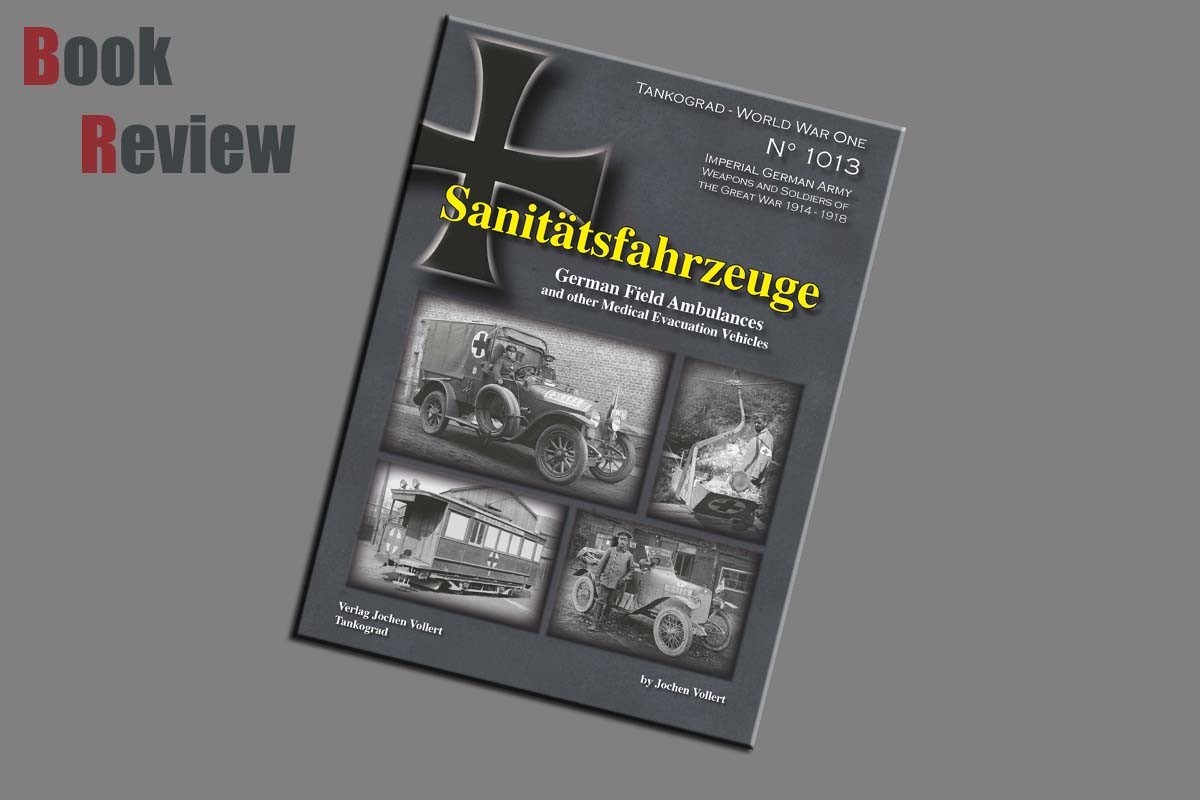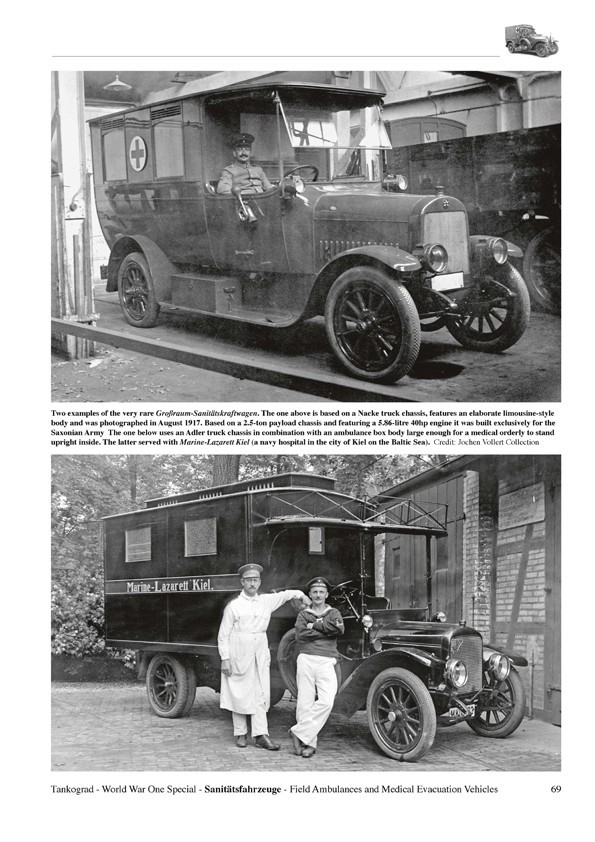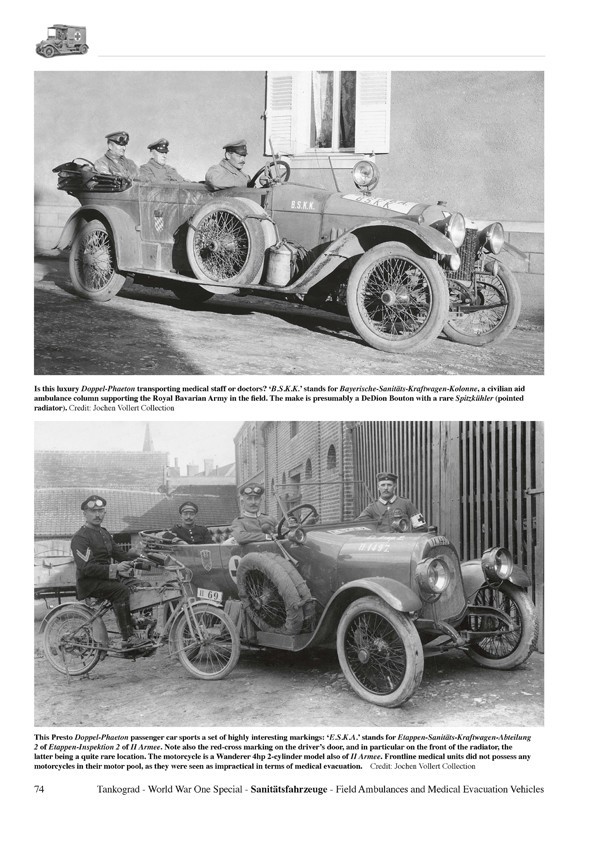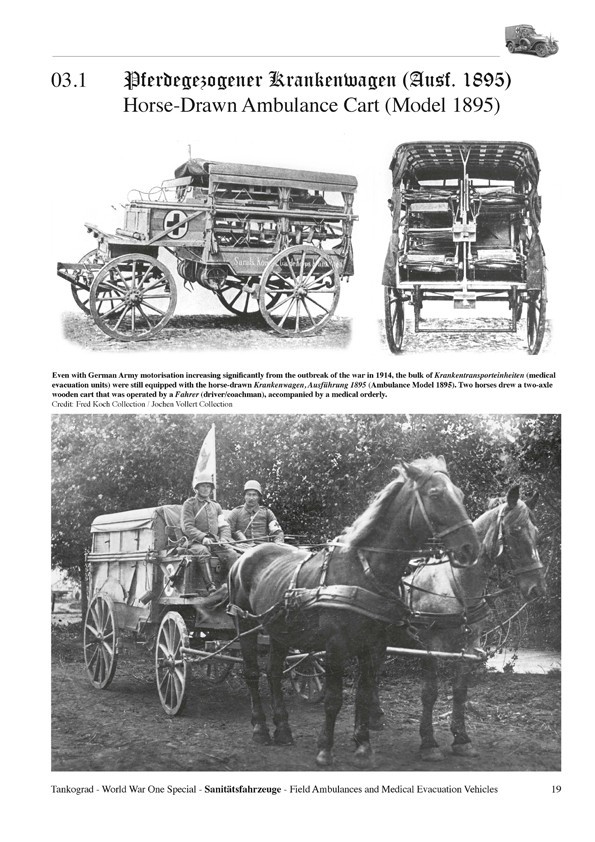
Introduction
The following introduction is taken from the Tankograd website:
The German Sanitätswesen im Felde (Army Medical Service) played a major role during campaigns on the frontlines of World War One, saving millions of soldiers' lives. The core task of the Sanitätswesen was the evacuation of wounded from the trenches and battlefield, and for this purpose it was equipped with a vast number of types of transport, ranging from wheeled stretcher handcarts to horse-drawn ambulance carts, and even field railway wagons, cable cars and streetcars. This publication outlines the chain of evacuation for the wounded, and describes these Sanitätsfahrzeuge (medical service vehicles) used for this valiant purpose.
There is a special focus on Sanitätskraftwagen (motorised field ambulances) that played an ever-growing role in saving soldiers from further harm or death from 1914-18. Among the famous makes of German field ambulance production that are covered in this book are: Adler, Apollo, Audi, Benz, Bergmann-Metallurgique, Büssing, Daimler, Hansa-Lloyd, Mathis, Nacke, Opel, Polyphon, Presto and Protos.
In addition, there are chapters on medical staff cars, cargo trucks, delivery vans, buses and trailers. This is the first ever publication covering German medical vehicles of World War One.
In 96 pages this publication is lavishly illustrated with 235 photographs, almost all of which are hitherto unpublished. English Text.
Review
This offering from Tankograd Publishing covers the vehicles used to take people from the front or to treat them at the front during World War 1. This release is authored by Jochen Vollert, it is a soft backed book of 96 pages protected by a glossy card cover. The paper within is a good quality, semi-gloss paper of approximately A4 in size. The text within this release is in English only.
The dedicated text within the book, is not a huge amount but it does provide the relevant information as required for this title and as a general rule of thumb Tankograd titles do their best work through their well captioned photographs. World War 1 ranks as one of the bloodiest conflicts in which man has engaged. The use of large amounts or artillery, trench fighting and the machine gun being in common use caused millions to be injured or killed. The killed depending on where they fell would often be buried due to the effect of shell blasts, to the extent that even today victims of WW1 still turn up during excavation having being covered where they fell. The countries throughout Europe and those of the Commonwealth have to be thankful for the advances in battlefield medicine, the understanding of the human body and surgery. With perhaps the biggest advance being the use of antibiotics.
Those injured would usually be vast in number, and the treatment at the site plus the evacuation to medical field facilities would make all the difference to who lived and who died. The German military used a vast number of transportation systems to get their troops treated. At the low end you have the stretcher and horse-drawn appliances, but motorised vehicles were also utilised to evacuate the injured for treatment. The images in this title make me cringe, as I can imagine how painful it would have been to be transported in one of these vehicles with any type of injury. However, it was the difference between life and death. Looking through the images I suspect the most comfortable mode of transport would have been by rail. As well as the conventional rail carriage, you even had a basic form of stretcher that could run on the rail lines used at the front. Cable cars, such as those used to go skiing were redesigned to take a prone injured person and get them from A to B. Jochen Vollert has brought together a huge number of period photographs, which when you think that photography was not a priority demonstrates the huge number of those injured and the plethora of transports used to rescue them. Each photograph is accompanied by a well written caption in English that provides pertinent information.
Conclusion
World War 1 was a conflict that many do not think about, I suspect due to all of those who fought in this conflict having been very old or have passed away during out lifetime, and it is hard to believe that all those who fought in this war have now passed away. It is left to titles such as this to bring life back to an historical event and give it substance, Jochen Vollert and Tankograd Publishing always manage to do justice to the subject in hand - not only covering its prime goal of the vehicles used as ambulances but also showing the human element. This is another title I highly recommend.





























